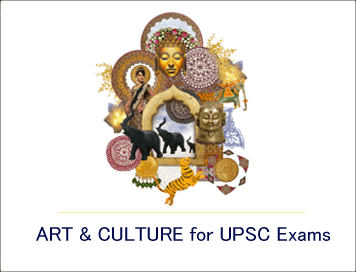NEW! The Gist (FREE) | E-BOOKS |
Theatre In India: Art & Culture for UPSC Exams

Theatre In India: Art & Culture for UPSC Exams
Theatre In India
India has longest and richest tradition in the- atre. The origin of Indian theatre is closely re- lated to ancient rituals and seasonal festivities of the country. Theatre of India began with Rigvedic dialogue hymns during the vedic pe- riod. Bhartamuni’s Naya Shastra describes ten classification of drama ranging from one act to ten acts. To Bharata Muni the playwright, the director and the actor were inseparable in the creation of a drama. The Indian theatre can be divided into three distinctive kinds. the classical or the Sanskrit theatre, the traditional or the folk theatre and the Modern theatre.
It is difficult to determine the precise origin of the Sanskrit theatre. Fragments of the earliest known plays have been traced to the Ist cen- tury AD. The earliest phase of Sanskrit the- atre includes the writing and practice of the- atre upto about 1000 AD. Sanskrit theatre is an amalgamation of the religious, educational and entertaining elements.
Folk or traditional theatre was the second phase of the evolution of theatre in India. The Folk theatre was mainly narrative or vocal without any complicated gestures or move- ments and elements of dance. Indian Folk Theatre was broadly divided into Ritual The- atre and Theatre of Entertainment. The two forms thrived together, mutually influencing each other.
Puppet Theatre
In Puppet Theatre various forms, known as Puppets are used to illustrate the narratives. There are different kinds of puppets of glove string, rod and shadow. The glove puppets are found mainly on Orissa, Kerala and Tamil Nadu. These puppets are worn on the hand and the puppeteer manipulates their heads and arms with his fingers. String puppets are found in Andhra Pradesh, Rajasthan, Orissa, Tamil Nadu and Karnataka. In this, the stress is more on the manipulative skill of the puppeteer.
Shadow Theatre
Shadow Theatre is a unique kind of perform- ing art which is close to puppetry. In puppet theatre the audience directly sees the puppet figures but in shadow theatre they only see the shadow cast on the screen. There is light source and a screen and in between the ma- nipulator inserts the flat figures by lightly pressing them on the screen so that the sharp shadow is formed . Usually the figure in the shadow theatre are made of leather. They are carefully stenciled so that their shadows sug- gest their clothing, Jewellery etc. Shadow theatre is prevalent in the states of Orissa, Kerala, Maharashtra, Tamil Nadu, Andhra Pradesh and Karnataka.
Modern Theatre in India
The Modern Theatre developed when the po- litical set up in India changed. The seeds of modern theatre were sown with the coming of British in India. They introduced their brand of theatre in Bombay, Calcutta and Madras. The initial purpose of the British was to pro- vide entertainment for the British soldiers and citizens trying to acclimatize themselves to a foreign country. Initially most dramatic works were composed in three languages - Bengali, Tamil and Marathi. But later plays began to be written in other languages.
Bengali Theatre
The beginning of modern Indian Theatre can be traced to the building of the Calcutta the- atre in 1779. The foundation of modern the- atre in India was laid by the efforts of many theatre lovers in Calcutta. By the mid 19th cen- tury, the rich young Bengals of Calcutta started to write plays based on British. naturalistic models, interweaving them with Indian mu- sic and songs. By the last quarter of the 19th Century, public theatres managed by Indian art- ists were established. Private theatre came into being in Calcutta. The Bengali stage assimi- lated the western ideas by adapting freely from Greek, English and French sources . Belagachia Natyashala built in 1858 became the centre of theatrical activity in Calcutta and produced great plays. The period between 1830 - 1872 can be rightly termed as the age of amateur theatricals of Bengal. With the founding of Indian People’s Theatre Associa- tion (IPTA), theatre became even close to the people by focussing on contemporary politi- cal and social issues of concern to them. The- atre continued to flourish in Bengal as a result of the dedicated efforts of Girish Chandra Ghosh, D.L. Roy, Rabindranath Tagore, Utpal Dutt, Balraj Sahani, Habib Tanvir and several others. In the post independence period the Bengal theatre witnessed a marked change in style with the coming on to scene of great play wrights like Badal Sarkar, Mohit Chatterjee, Arun Mukherjee and others.
